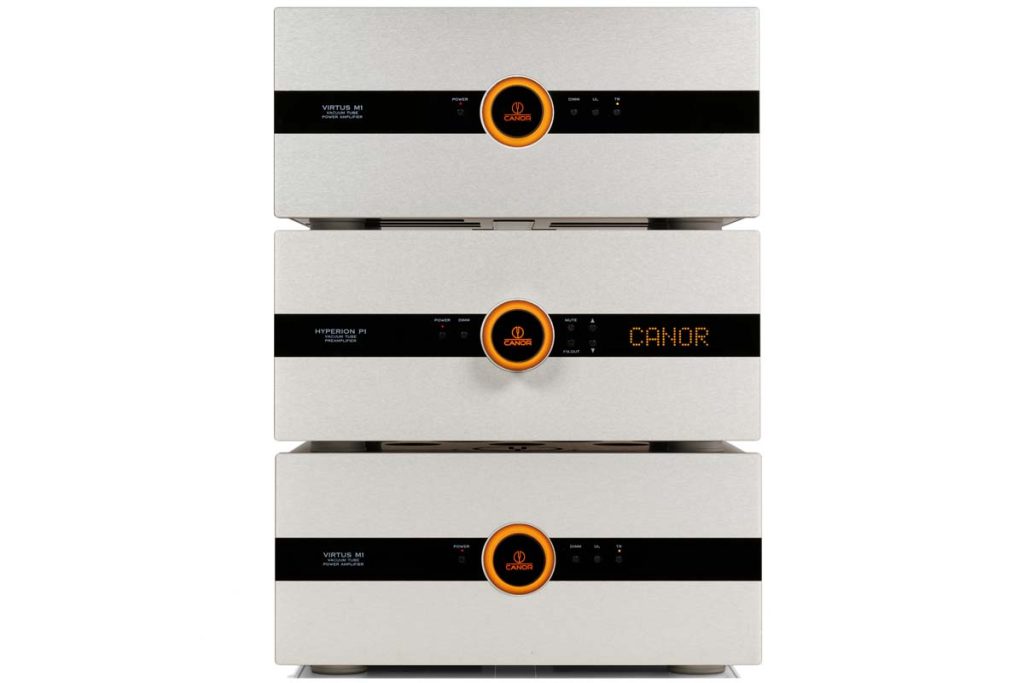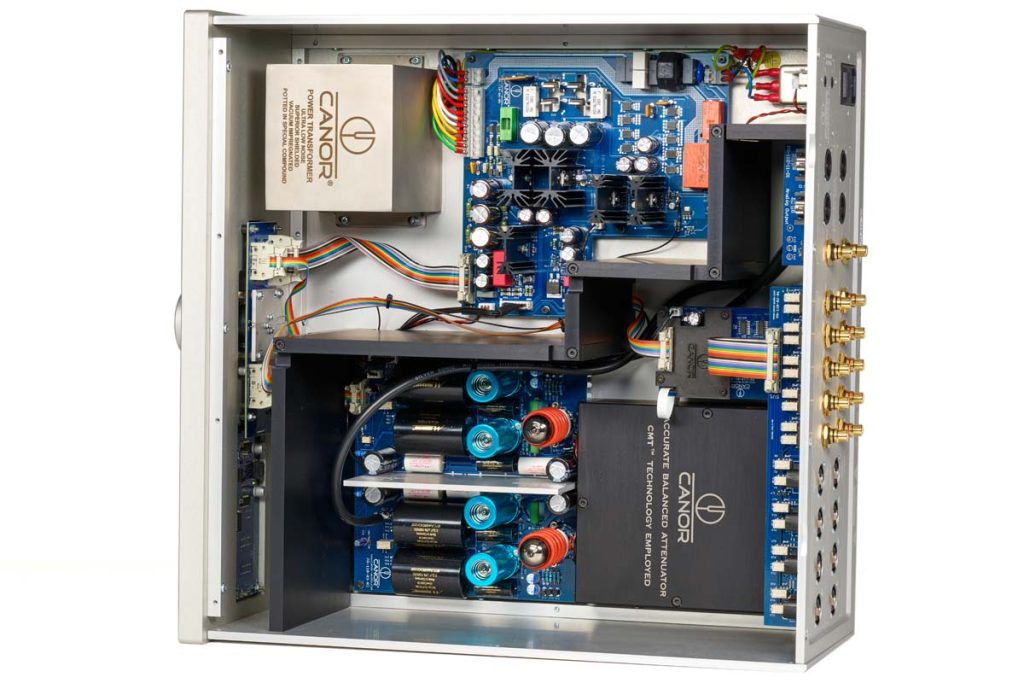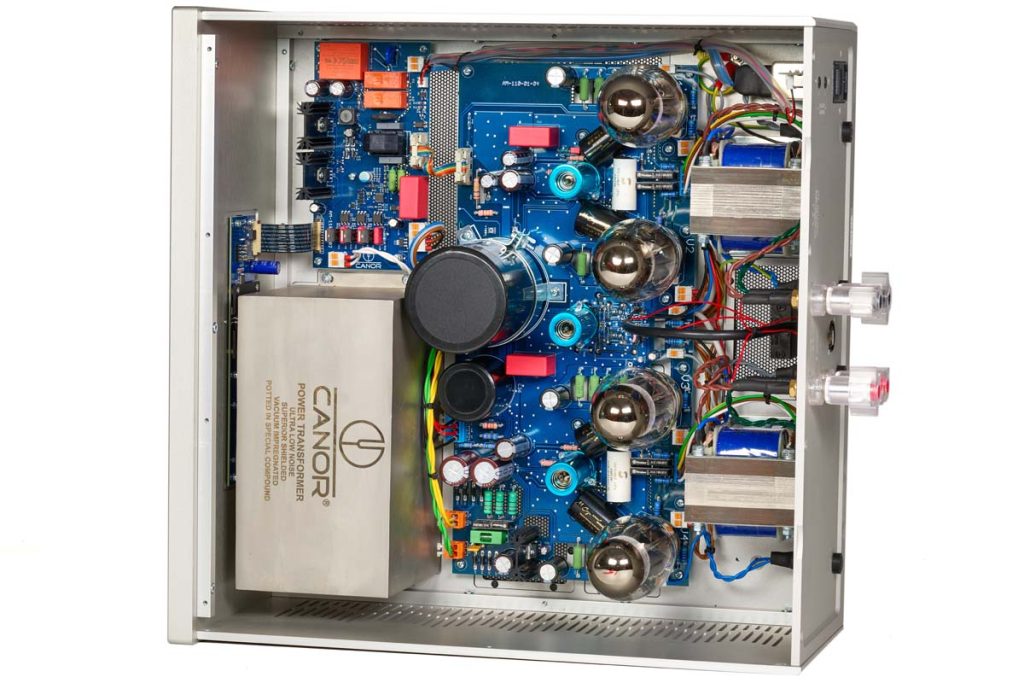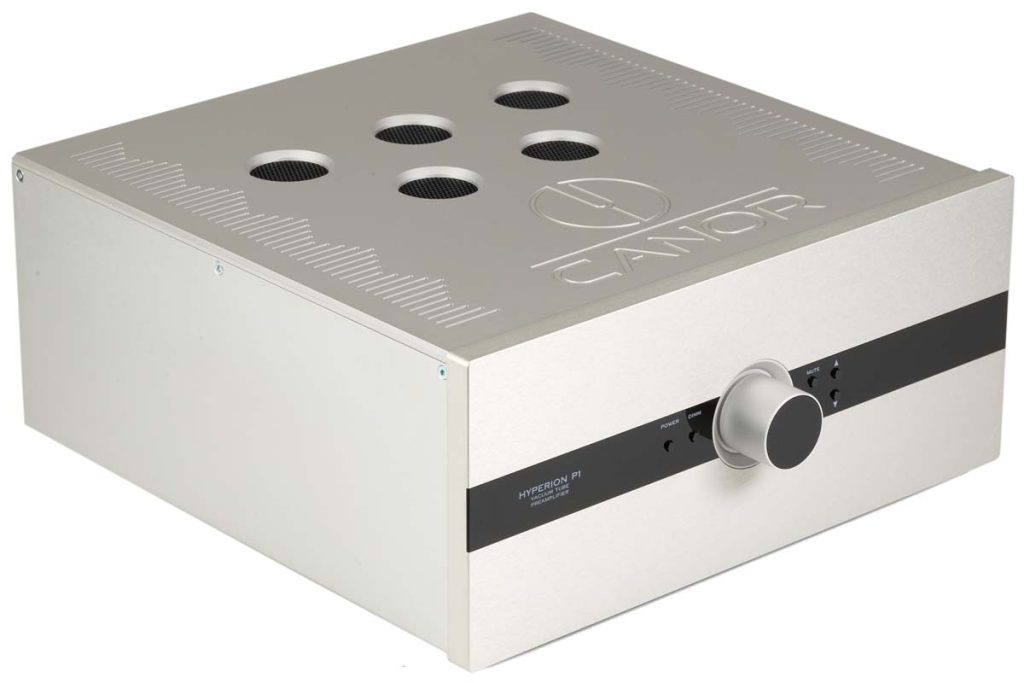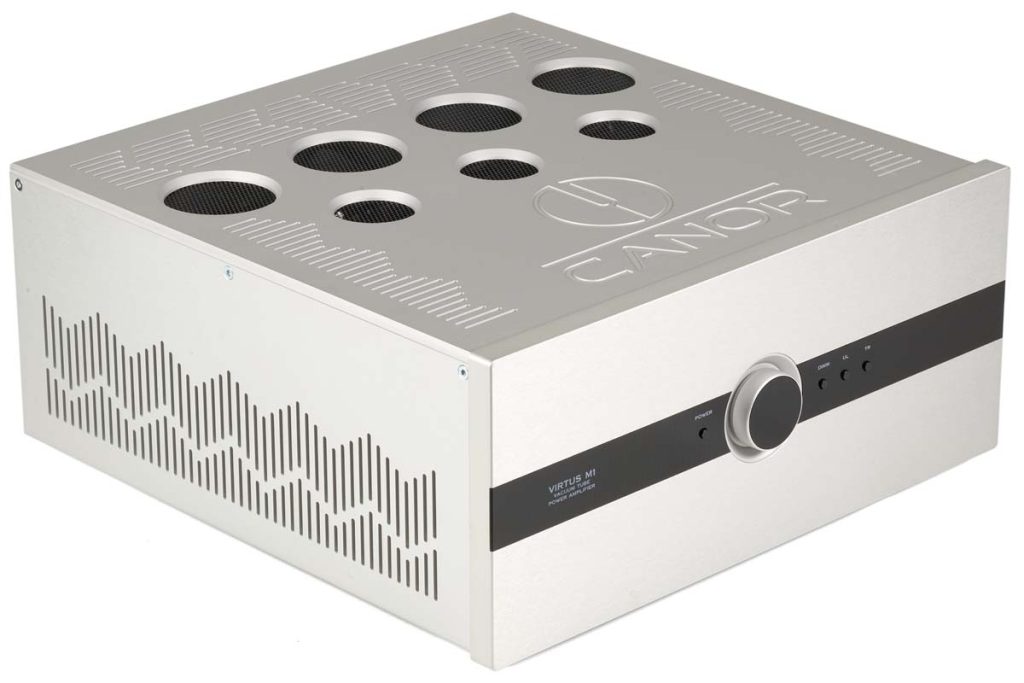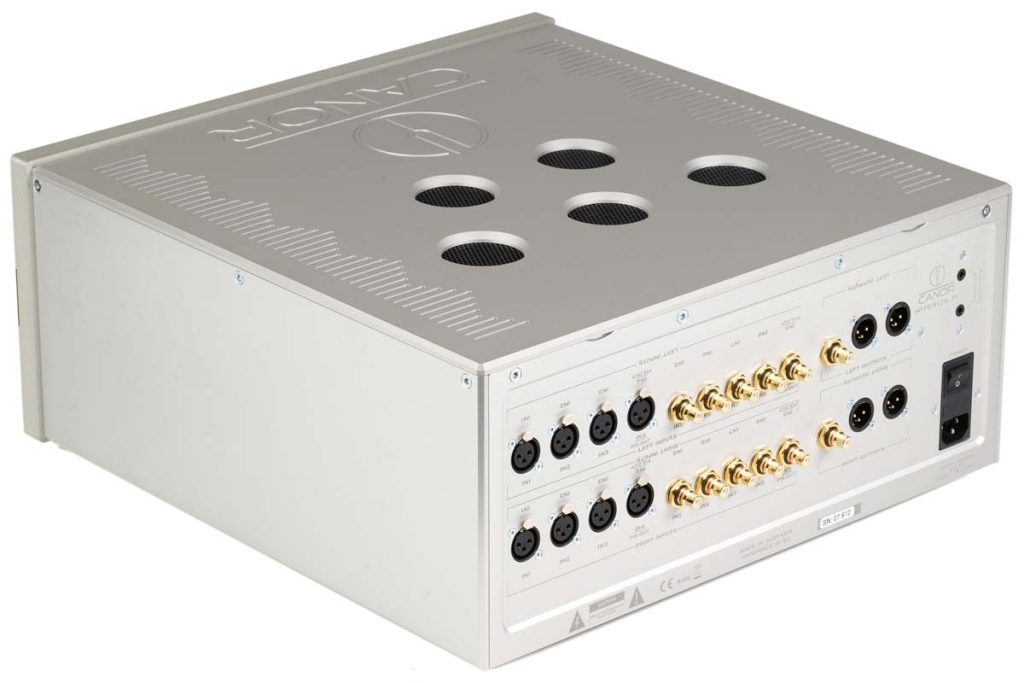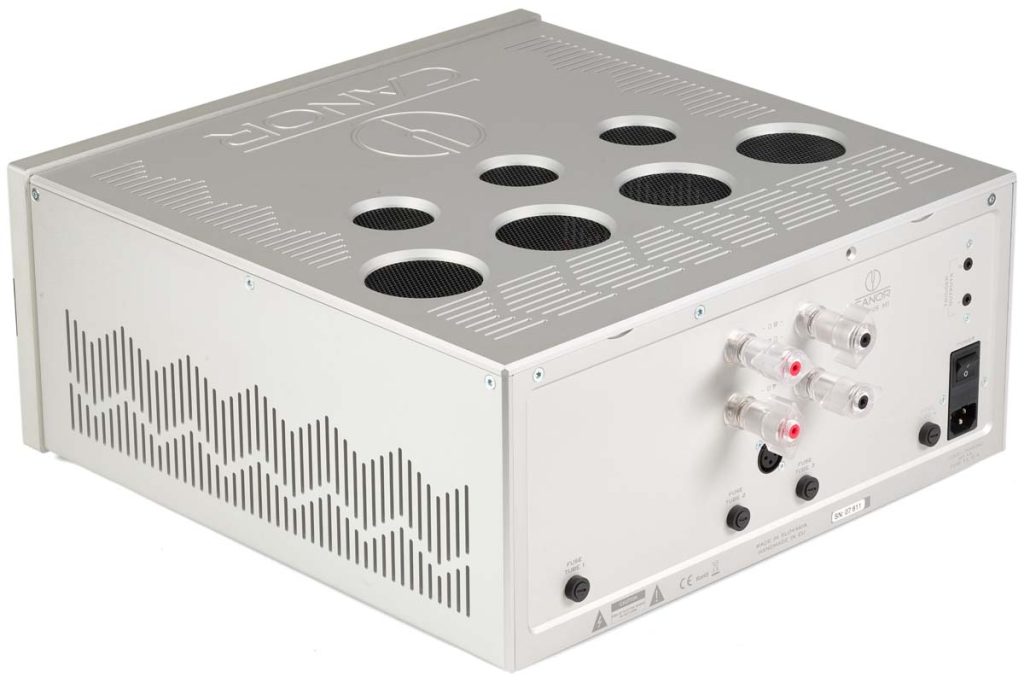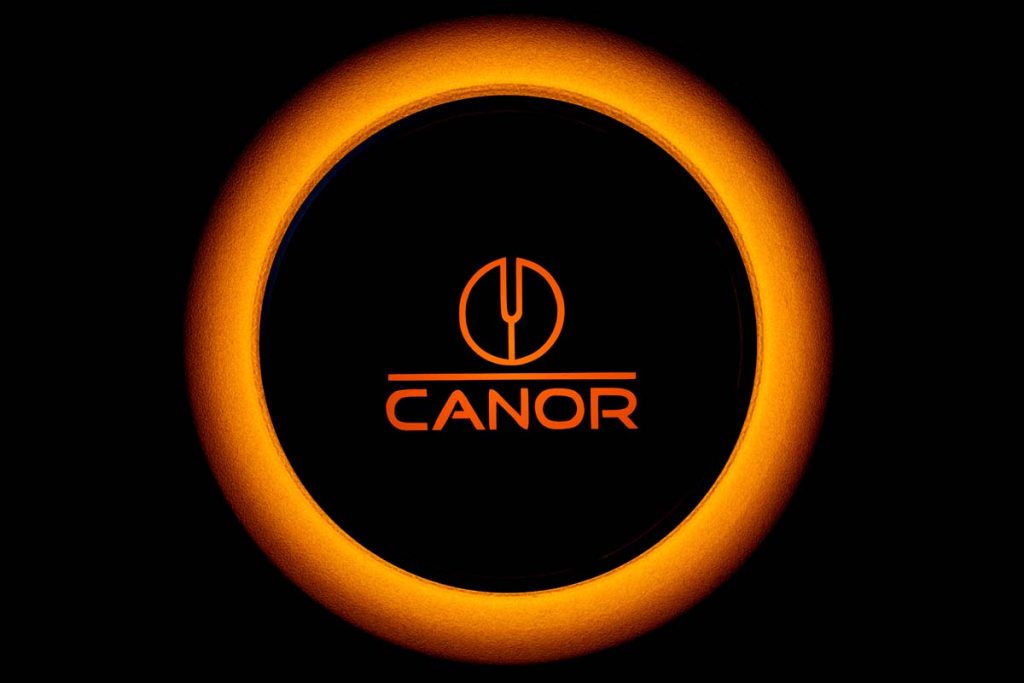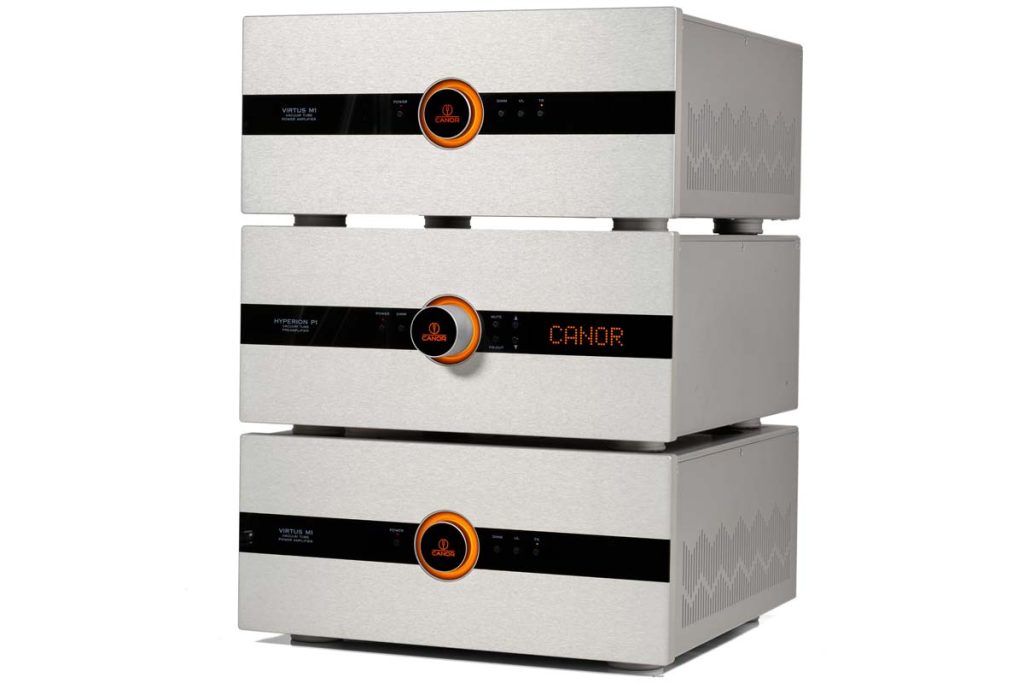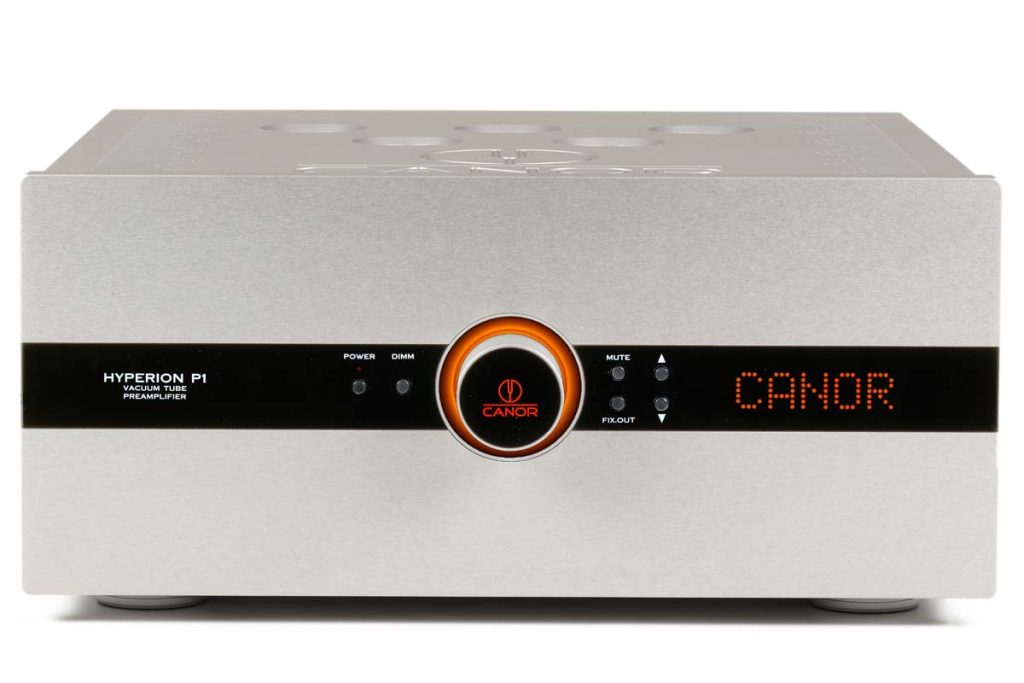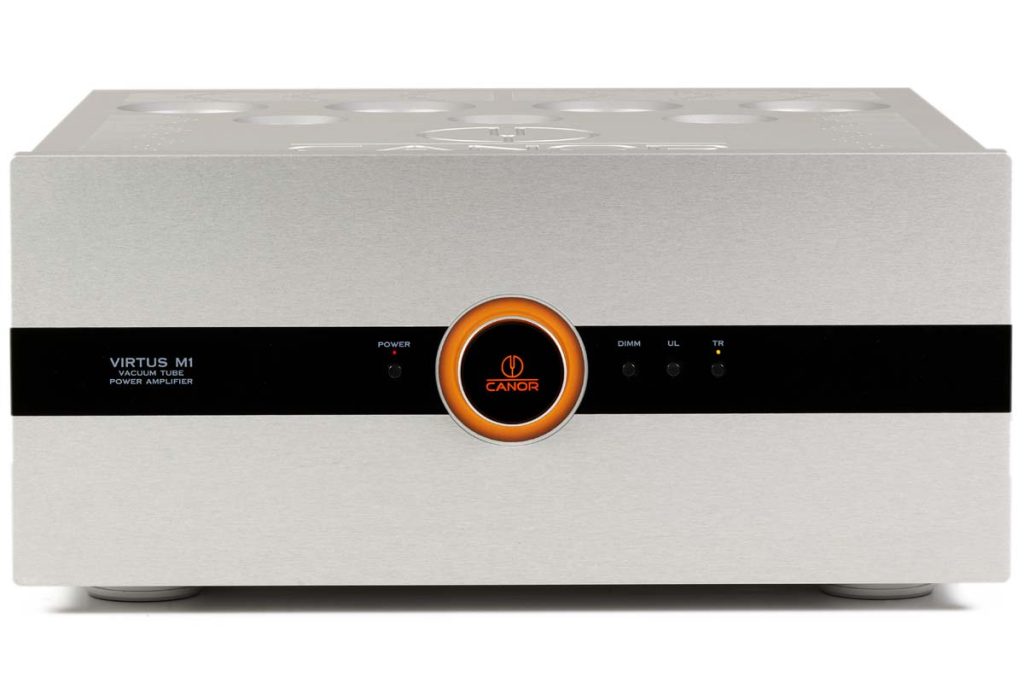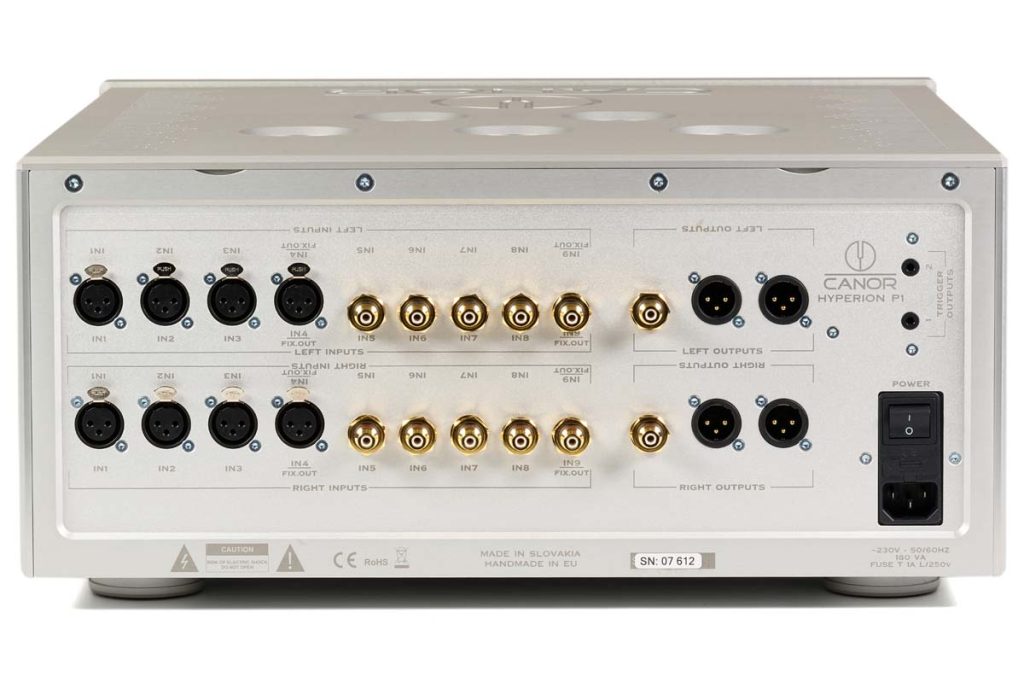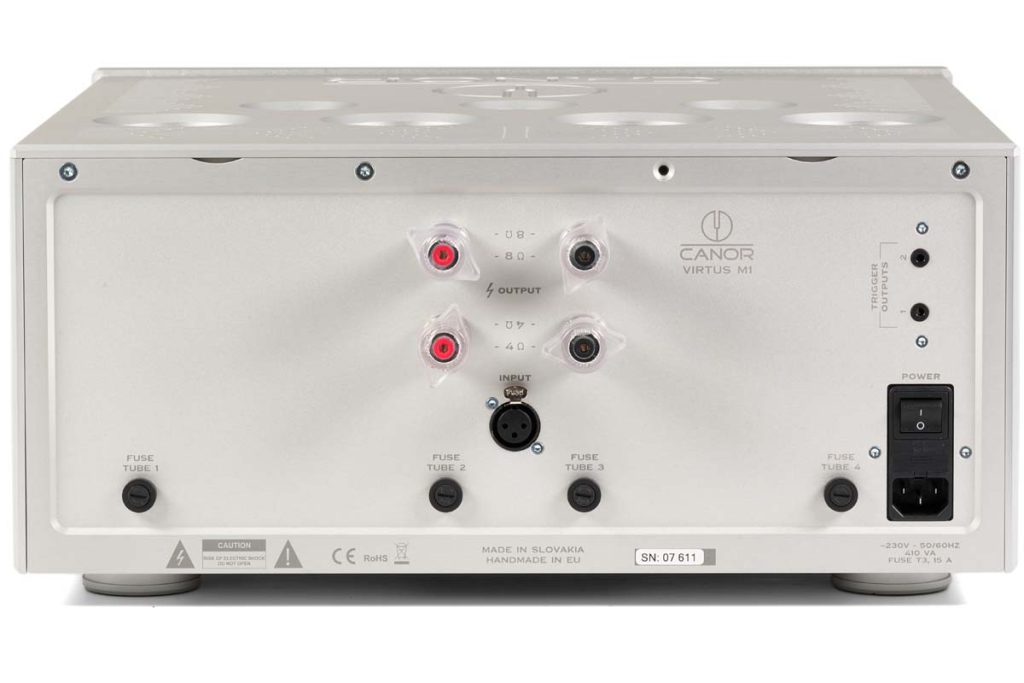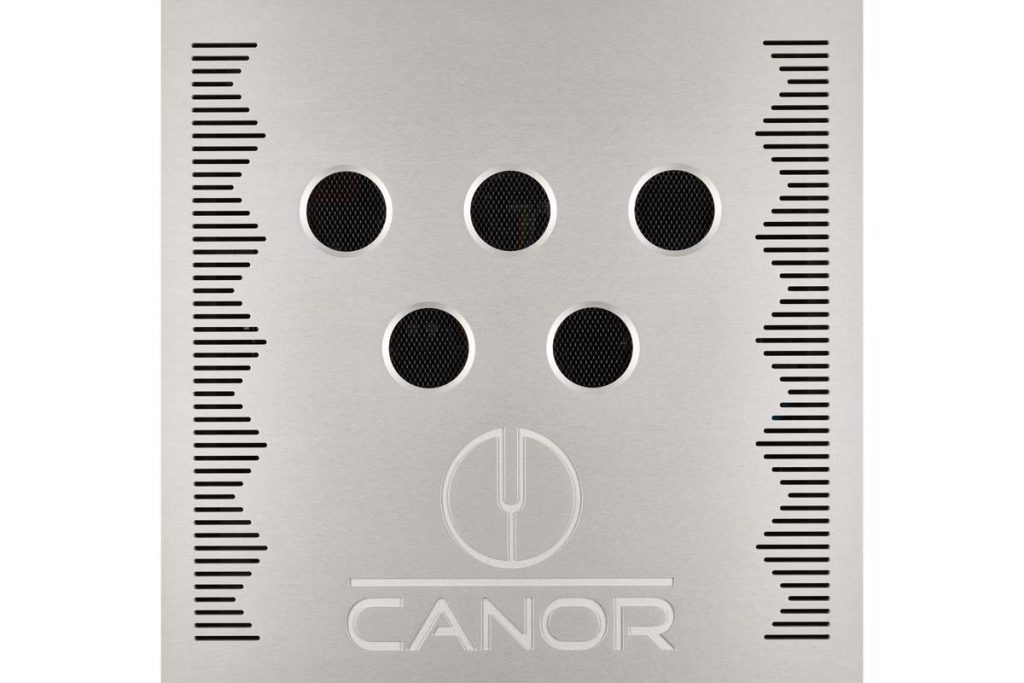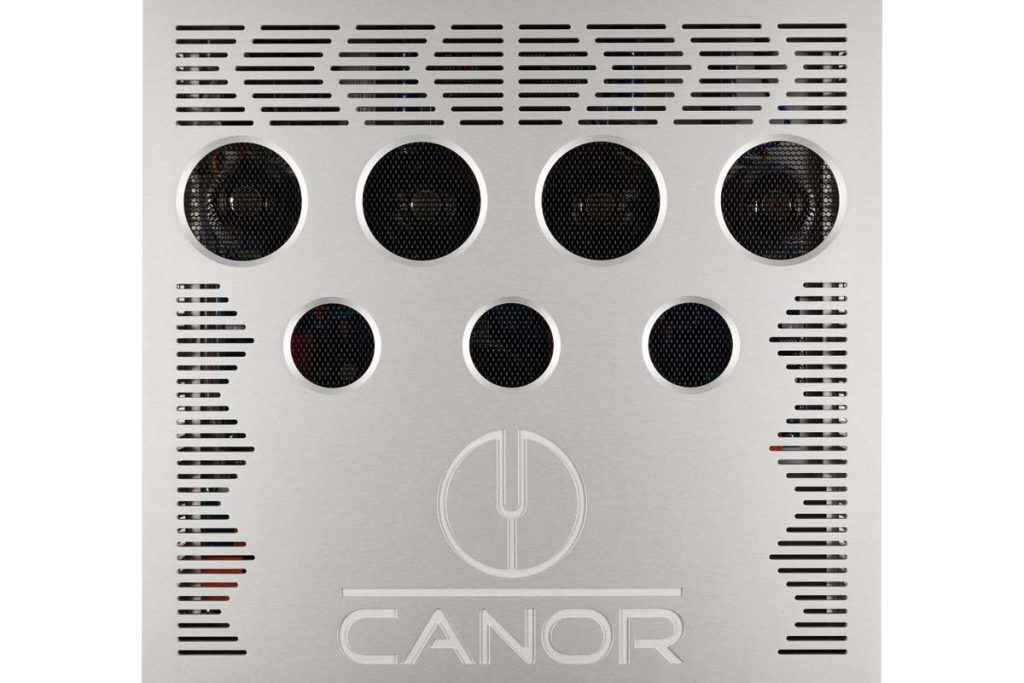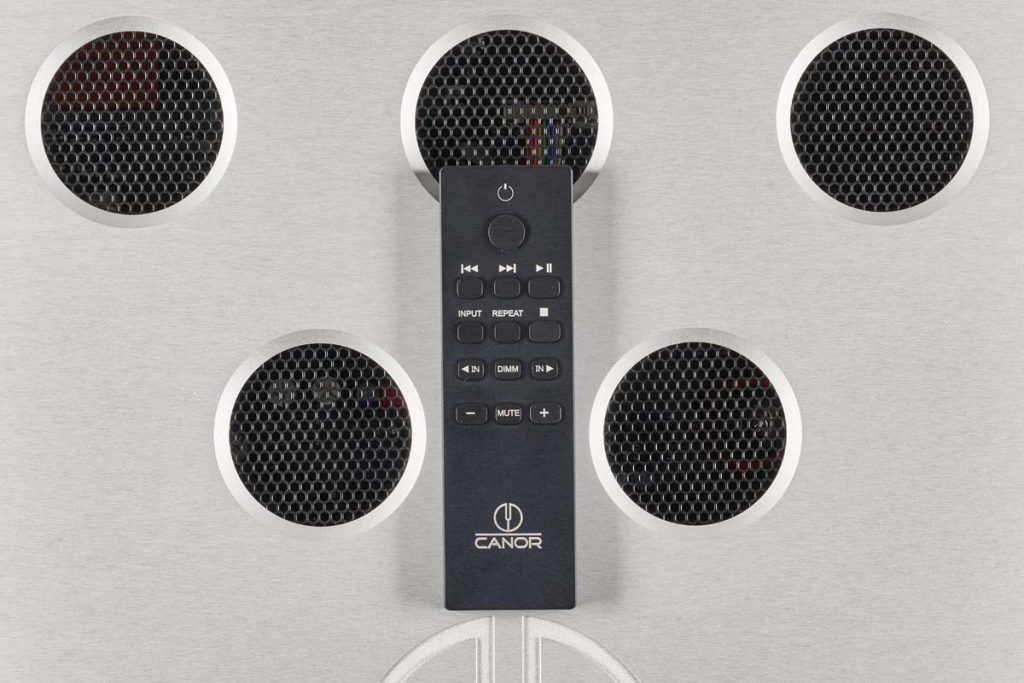Over the last two decades of being intensively involved with hi-fi/high-end gear, I’ve lost any fear of big numbers – be it prices or weight figures.
The tube preamplifier Canor Hyperion P1 weighs in at 35 kilograms, the corresponding tube mono amplifiers Canor Virtus M1 tip the scales at 40 kilograms each, that adds up to a whopping 115 kilograms. Clearly, we’re talking about hi-fi for “big” guys and gals.
In keeping with the mode of operation of the amplifiers, I actually wanted to use “Sweeter the Tubes never Glow” for a title, but Canor Audio has banished said tubes into the inside of the amplifiers. There is little to see here. Already when unpacking, they come across as proper HiFi monuments, where the term “mighty” seems perfectly appropriate – what hunks …!
Canor Audio has only been represented in Germany for a good two years, although the Slovakian manufacturer has been active as a producer of audio equipment since 1995; a considerable number of other producers also have their cabinets built there. The company’s vertical range of manufacture is considerable, with almost ninety percent of the required parts being manufactured in-house. The quality of the enclosures, with the solid metal insert made of aluminum on in-house CNC milling machines, is simply exemplary. At the first glance inside, the inserted circuit boards show their true magnificence. I’ll take the liberty of quoting the manufacturer at this point: “Canor uses its own fully automated SMT (Surface Mounted Technology) line to assemble and solder the boards. It consists of screen printing equipment, pick-and-place machines, reflow ovens, as well as conveyor systems. The capacity of the SMT line is up to approx. 13,000 components per hour, depending on the components used. The procurement of components for PCB assembly is handled by the company’s own purchasing department – more than 4,000 different component types are stocked in a clearly laid out electronically controlled storage system. Currently, Canor produces more than 500 different types of printed circuit boards …”
As you can see, real know-how is involved here, which is consistently implemented at the highest level by the current workforce of around 100 employees.
The three amplifiers are soon unpacked and set up. With this massive design, it basically doesn’t matter on what kind of surface the devices should be placed – wood is always a good fit! The correspondingly massive (and of course self-made) spikes with coasters ensure solid contact. Alternatively, the amplifiers can simply be placed on felt glides. In the case of this review, they stood on a solid wooden plate. You can certainly experiment, but the mass of the respective devices alone ensures a very solid stand. A practical detail can be seen on the back: The labels of the connections are listed twice, i.e. also overhead. This is a consideration “by practical minds for practical minds” which gets explicit praise from me! On the front, the two thick control buttons immediately catch the eye, and the LED border pulses in orange during soft start, while the large matrix in the same color runs along – how cool is that?
The included system remote control could definitely be a bit bigger. For those in a hurry, the three amps can also be started simultaneously with an included signal line. Well, I liked the single switching process with the audibly latching relays better. Also, this somehow fits the feel of the units better: I just love going through the activation manually. But let’s take a closer look at the technology. While the preamp has no negative feedback, you can activate it for the power amps on their bottom plate. My personal opinion on this: Tube amplifiers without negative feedback sound more musical and honest, this switching option could have been omitted from the monos. Just like the front-side selection of the operating mode between ultralinear mode and triode. Firstly, the signal has to pass through another circuit in the former, and secondly, quite a few hi-fi enthusiasts are of the opinion that triode mode sounds “more correct”. I am one of them, because in ultra-linear mode the sound is too “ultra” for me … But that is something everyone should/must decide for himself.
Of course, the output transformers of the Virtus M1 are manufactured in-house. Mu-metal (a material from a series of so-called “soft magnetic materials”) serves as basis for secure current flow. The advantage of Mu-metal is its high permeability. As a result, the magnetic flux is of lower frequency, static magnetic fields are concentrated in the material, which ultimately results in high damping in regard to shielding. The circuit features a supersymmetrical design. This is not a marketing slogan, but rather a special circuit variant that was first used by a certain Nelson Pass. The term originates from physics and can be explained – admittedly somewhat casually – in such a way that each signal path is operated mirrored (thus doubled). This construction does not allow for interfering signals in the first place. In the signal path is populated with highest quality capacitors from Mundorf (Supreme Silver-Gold-Oil), and the conductors are made of the best copper, which is finally coated with pure silver. Adequate power output is provided by four KT150 – solid Russian mass production technology, which has proven its worth hundreds of thousands of times. This applies equally to the tubes used in the input of the mono amplifier. Each signal path is equipped with a well-rounded ECC82 (12AU7) and an ECC83 (12AX7) as a splitter. At the rear, an XLR connector ensures safe contact, and the speaker connections are in no way inferior to the housing in their extremely solid design.
The Hyperion P1 is downright connection-friendly with four XLR and five RCA/Cinch contacts. Internally, four 6922s and two 6H30PIs are at work, all known for their long operating life and sound quality. However, they require a lengthy break-in period of several hundred hours. It must be noted that all tubes are meticulously matched by Canor Audio. Clearly, someone here knows his craft! In detail, you can see this, among other things, in the very solid separation of the analog from the power stage inside the device. For the sake of good order, I have to mention that all three amplifiers operate in pure Class A circuitry. But enough of the dreary technical writing, what I want to know is: How does it sound?
The distributor sent us three IsoTek Eternal power cables for testing. A most welcome action, because a review operation with the standard power cables, which are at best suitable for functional testing, would not have done the amps justice. Since the Isotek products are in the catalogue of the same distributor, this is only consistent.
Power on: Click, click – wait about 20 seconds and then the amplifiers switch on. Connected to my highly sensitive (at 96 dB) two-way horn speaker Blumenhofer Acoustics Genuin FS1 Mk III, I can hear nothing at first, so I increase the volume – still nothing, no noise (which would actually be typical for tube amplifiers). Very good! The music selection always starts with a female voice. In this case by Katie Melua. I like her exceedingly expressive vocals particularly well in combination with the highly accurate recording of her double CD Ultimate Collection. I sink into the sound spaces created by the three test samples and let the CD run back to back. The sounds are presented to me with great naturalness, they are spacious and very clean in the presentation of the individual instruments. As my listening room has been acoustically treated, it allows a correct assessment of the sound with its reverberation time of 0.4 milliseconds. Joe Bonamassa with “The Ballad Of Jon Henry”, live from the Royal Albert Hall is particularly fun. Completely unimpressed by the power requirement, this Slovakian amplifier trio presents me with a whopping 100 decibels of sound pressure in my room. Rhythm driving drum sounds, wildly billowing synth and organ sounds, accompanied by a stupendous and gnarly bass guitar – that’s what I call a great show. Now that my ears are thoroughly “ruined” for further listening for this day, a break is in order. The next listening day starts with classical music – Michel Godard plays the medieval instrument called Serpent masterfully. Sonically, this serpentine and leather-covered wooden horn is reminiscent of an alphorn. I listen to his CD Monteverdi – A Trace of Grace, most impeccably recorded in a medieval abbey in central France. The enormous sound space of the church is being conveyed into my room flawlessly, and at the latest when the mezzo-soprano Guillemette Laurens enters with her unbelievably nuanced voice, a goosebump experience is ensured in the listening room – first class! Especially the noise-free reproduction capability in the musical interstices is one of the special features of this amplifier trio from Canor Audio – what a statement …
Accompanying Equipment
CD-Player: Restek Epos | Turntable: Clearaudio Innovation with Tonarm Universal/Dynavector Te Kaitora Rua | Phono preamp: RCM Audio Sensor 2 | Loudspeakers: Blumenhofer Acoustics Genuin FS1 Mk III | Cables/Mains: HMS Suprema XLR, HMS Suprema (LS), mains filter MFE-DF1, in-akustik AC3500, Power cord IsoTek Editorial | Other: acoustically treated room (40 qm) with a decay time of 0,4 ms
Tube Power Amplifier
Canor Virtus M1
Concept: Tube mono power amp in a “supersymmetrical” layout | Power output: 1 x 110 W into 8 Ω (ultra linear), 1 x 55 W into 4/8 Ω (triode mode) | Bandwidth (±0,5 dB/5 W): 10 – 50 000 Hz | Input impedance: 200 kΩ | Input: 1 x XLR | Tube complement: 4 x KT150, 2 x ECC82, 1 x 12AX7 | Dimensions (W/H/D): 45/19/47 cm | Weight: 40 kg | Warranty period: 2 years | Price per piece: around 14 200 €
Tube Preamplifier
Canor Hyperion P1
Concept: Tube preamp with no negative feedback | Bandwidth (±0,1 dB): 10 – 80 000 Hz | Input impedance: 30 kΩ | Inputs: 4 x XLR, 5 x Cinch | Outputs: 2 x XLR, 1 x Cinch | Tube complement: 4 x 6922, 2 x 6H30PI | Dimensions (W/H/D): 45/19/47 cm | Weight: 35 kg | Warranty period: 2 years | Price: around 12 000 €
IDC Klaassen International
Am Brambusch 22
44536 Lünen
+49 231 9860285
Idc(@)idc-klaassen.com


